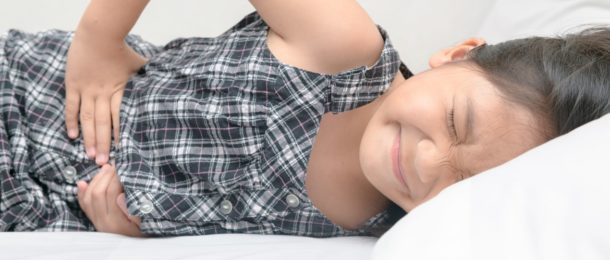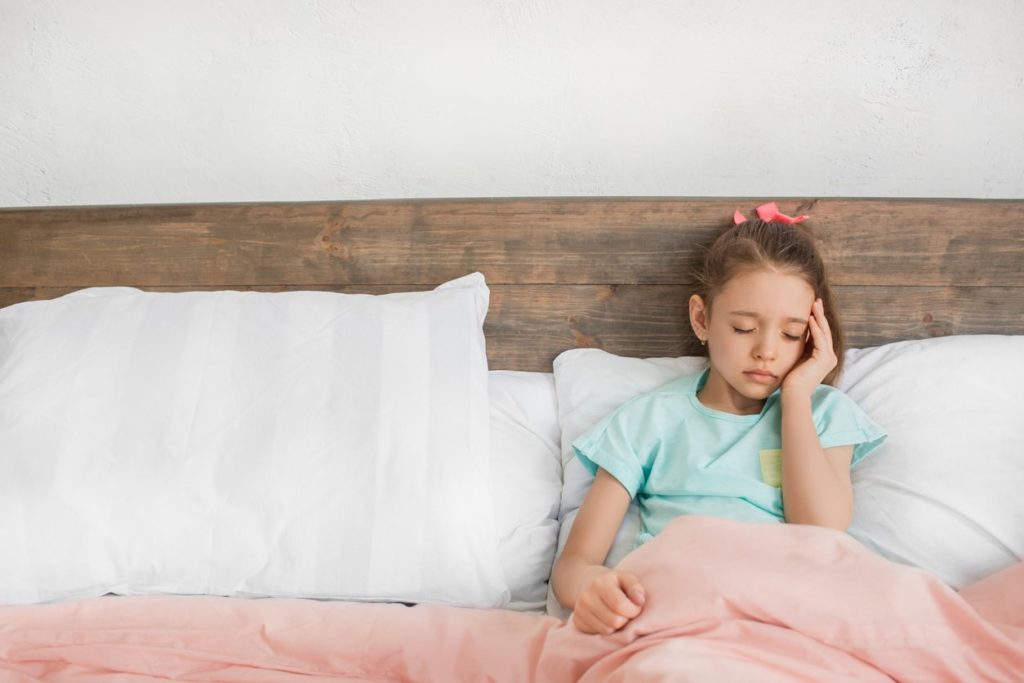Understanding Chronic Pain in Children & How to to Counter It

Chronic pain in children and teenagers is becoming more common, and is often not diagnosed for years. Here is how we can reduce the most common types of chronic pain children suffer from.
Reports have stated chronic pain in children is underdiagnosed and not treated properly in both children and teenagers.
Especially true are cases that deal with abdominal pains, musculoskeletal issues, joint pain and headaches.
Statistics have shown that up to 38 percent of children and adolescents have faced some type of chronic pain.
This number is frightening because eventually, these children and adolescents will be adults with chronic pain. That is, unless they are treated properly from the beginning.
Defining chronic pain in children is a great first step to understanding this epidemic and how to counter it.
What is Chronic Pain in Children?
An official definition of chronic pain in children came from the American Pain Society on Pediatric Chronic Pain.
They label it as: recurrent and consistent pain that lasts longer than it should, longer than normal healing times, often longer than three to six months.
The pain can be continuous or come and go, and can be different for each child.
The most common types of chronic pain in children include:
- Tension and migraine headaches
- Abdominal pain
- Growing pains
Main causes of chronic pain in children include:
- Tissue damage
- Nerve damage
- A problem with the nervous system
How Does Chronic Pain Affect Children?
Chronic pain can impact all areas of a child’s life. It can affect their mental and physical health, as well as socialization.
Chronic pain can lead to:
- Anxiety and depression
- Sleep problems
- An inability to concentrate
All of these can lead to poor performance in school and extra-curricular activities.
Children with chronic pain need a team of providers to help treat their issues so they can have a high quality of life. From a thorough and proper diagnosis to ongoing treatments, children need a full range of specialists.
Treatments can include all of the following:
- Medication
- Physical therapy
- Psychological counseling
- Specialized treatments provided by doctors at a pain management clinic
Below, we discuss some of the most common conditions of chronic pain in children, as well as what a pain management doctor can do to help counter the symptoms of pain.
1. Juvenile arthritis
Juvenile arthritis is diagnosed in children ages sixteen or younger who have experienced joint swelling and pain for more than six weeks, with no resolution.
This problem affects approximately 50,000 American children.
It is sometimes classified as rheumatoid arthritis or idiopathic arthritis in juveniles.
The inflammation associated with juvenile arthritis can be painful for a child. Their immune system does not work correctly.
It thinks some of the child’s tissues are foreign and therefore, tries to attack them, leading to
- Redness
- Swelling
- Stiffness
- Other symptoms of pain
Treatment Options
Treating juvenile arthritis is best with a pain management specialist. They can determine if the child requires anti-inflammatory drugs.
They can also obtain the right blood tests and x-rays to help form a treatment plan.
Corticosteroids may help some children combat the pain. Others may benefit from physical or occupational therapy, and in severe cases, surgery.
2. Complex Regional Pain Syndrome in Children
According to an online pediatric journal, musculoskeletal pain is a top reason children are referred to a doctor when it comes to pain they are experiencing.
Most experience
- Pain in their limbs
- Increased sensitivity in certain body part
- Temperature changes in affected areas
- Skin changes
- Limited range of motion
This issue is sometimes caused by injury to an area of the child’s body. However, this is not always the case.
That’s why working with a specialist is important in getting the right diagnosis and treatment.
Treatment Options
Treatments can include medications to reduce the pain, as well as steroids and bone protectors.
In addition, nerve blocking medicines may help as well.
Specialists may even determine the use of spinal cord stimulation; biofeedback, physical therapy and electrical nerve stimulation can be of benefit.
3. Fibromyalgia in Children
Sometimes referred to as juvenile primary fibromyalgia syndrome, a child can experience many negative symptoms. These include:
- Fatigue
- Soreness
- Headaches
- And can affect all areas of the body – a child’s tissues, muscles and joints can feel pain with this condition.
Some kids may have irritable bowel syndrome as a symptom, while others may have anxiety, depression and an inability to concentrate.
These can all become more severe if not treated properly.
Treatment Options
Exercise and physical therapy can help some children by stretching the muscles and learning how to relax the muscles.
Other therapies include medications such as steroids and anti-inflammatories.
Pain management specialists can help your child identify lifestyle triggers to avoid for preventative measures.
When unable to prevent symptoms, hot and cold treatments can be used, as well as alternative therapies such as massage, yoga, and meditation.
4. Headaches in Children
The reasons children get headaches can be broad.
- Some may be feeling overwhelmed and stressed.
- Others may be dehydrated.
- Their diet and the amount of sleep they get can also lead to headaches in children.
Vision problems, as well as a family history of headaches can also be causes of headaches.
Getting a proper diagnosis to find out the true source of your child’s headaches is important.
Once you find out the cause, your doctor can establish proper treatments.
Treatment Options
If your child is dealing with a chronic pain condition, a pain management specialist can develop specific therapies that may help.
Therapies can include vitamin infusions, hydration solutions and even stress relieving activities.
Your doctor may want to treat nutritional deficiencies to combat headaches, such as raising magnesium or iron levels.
In severe cases, anti-inflammatory medications may be useful. They can offer both abortive and preventative treatments to help relieve pain symptoms associated with headaches.
In addition, treatment involving chiropractic care, massage, cognitive behavioral therapy, and medical foods has been found to ease headaches in children.
Take the First Step
Chronic pain in children is much more common than one might think.
If your child is suffering from any type of pain, the first thing you can do is contact a pain management specialist who can give you a complete evaluation, diagnosis and will develop a plan that will help your child get back to living pain free.
Comprehensive Pain Management Center provides treatment for a variety of pain conditions. If you or a loved one is suffering from pain, contact us today.


